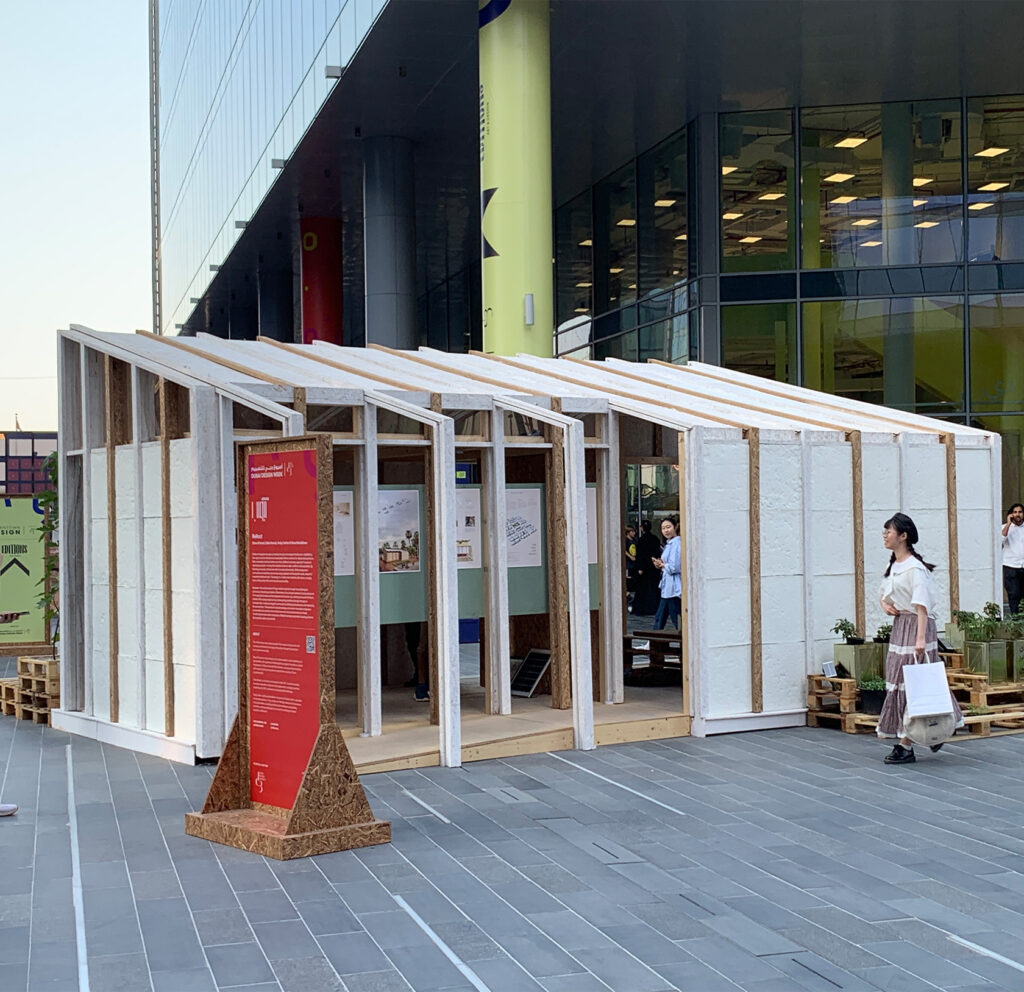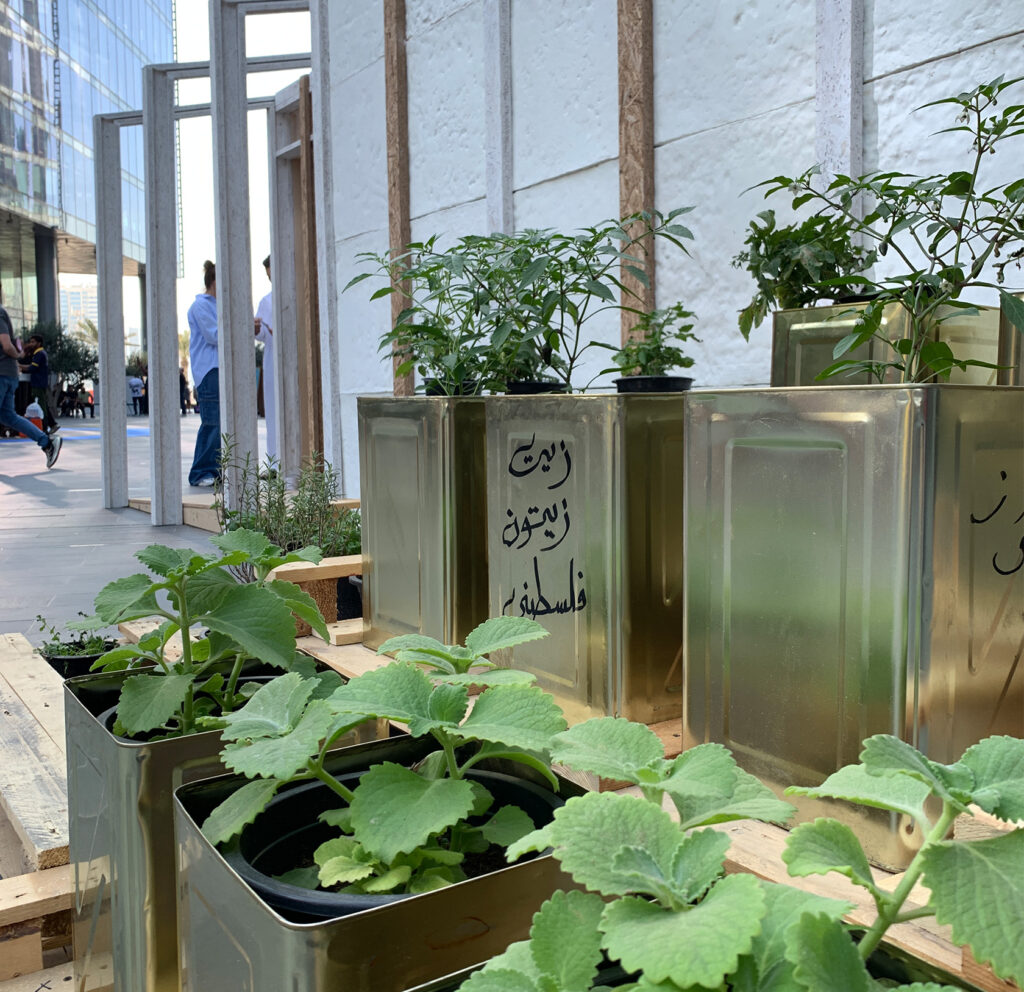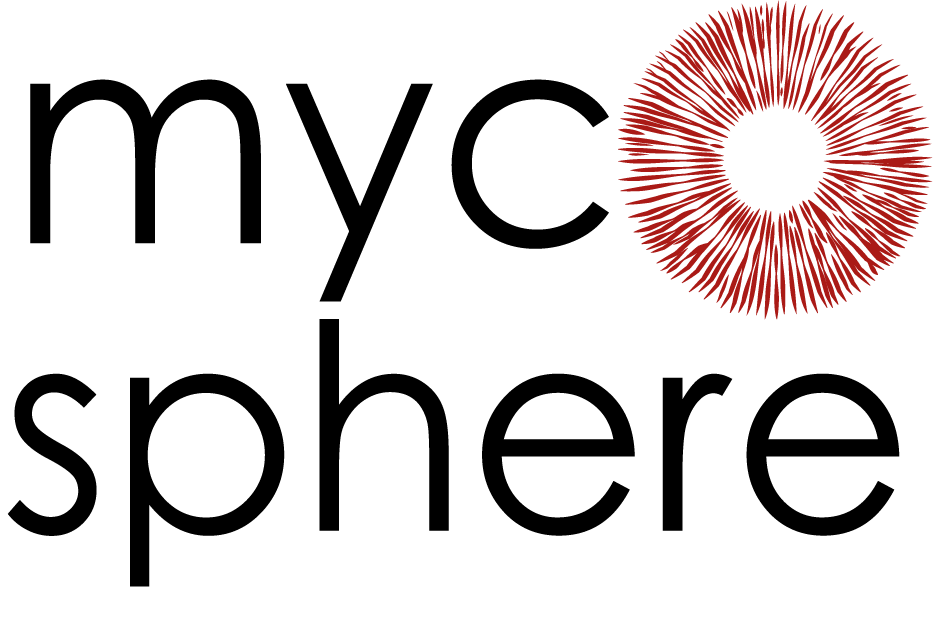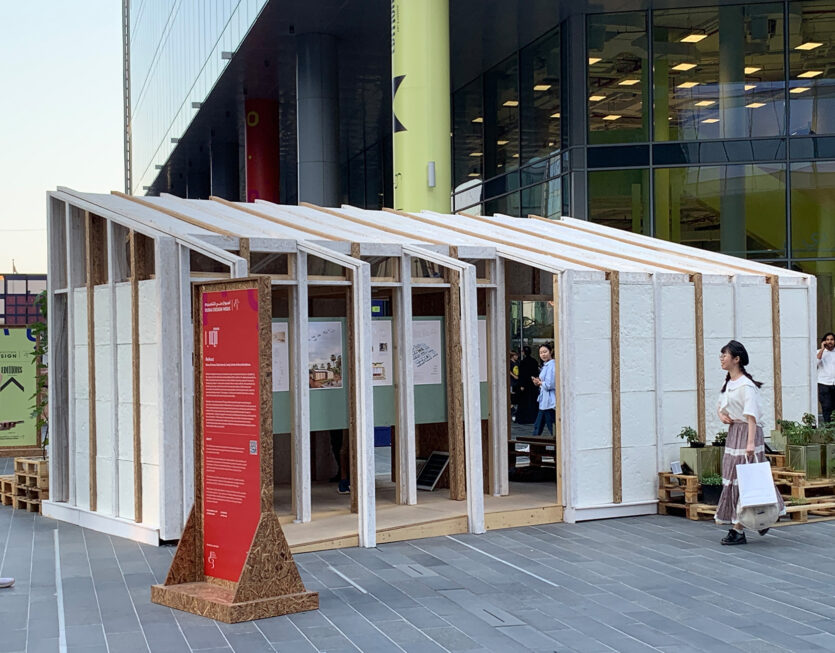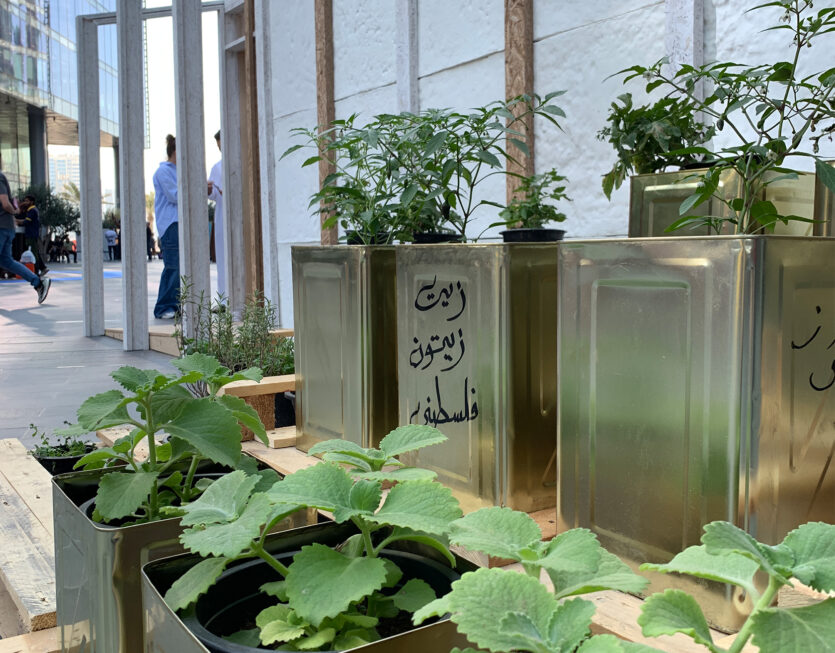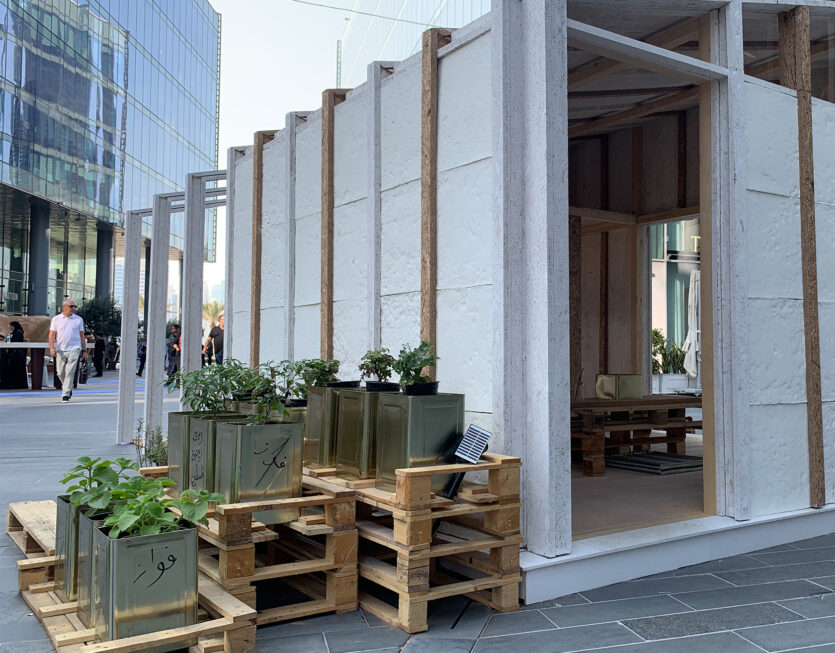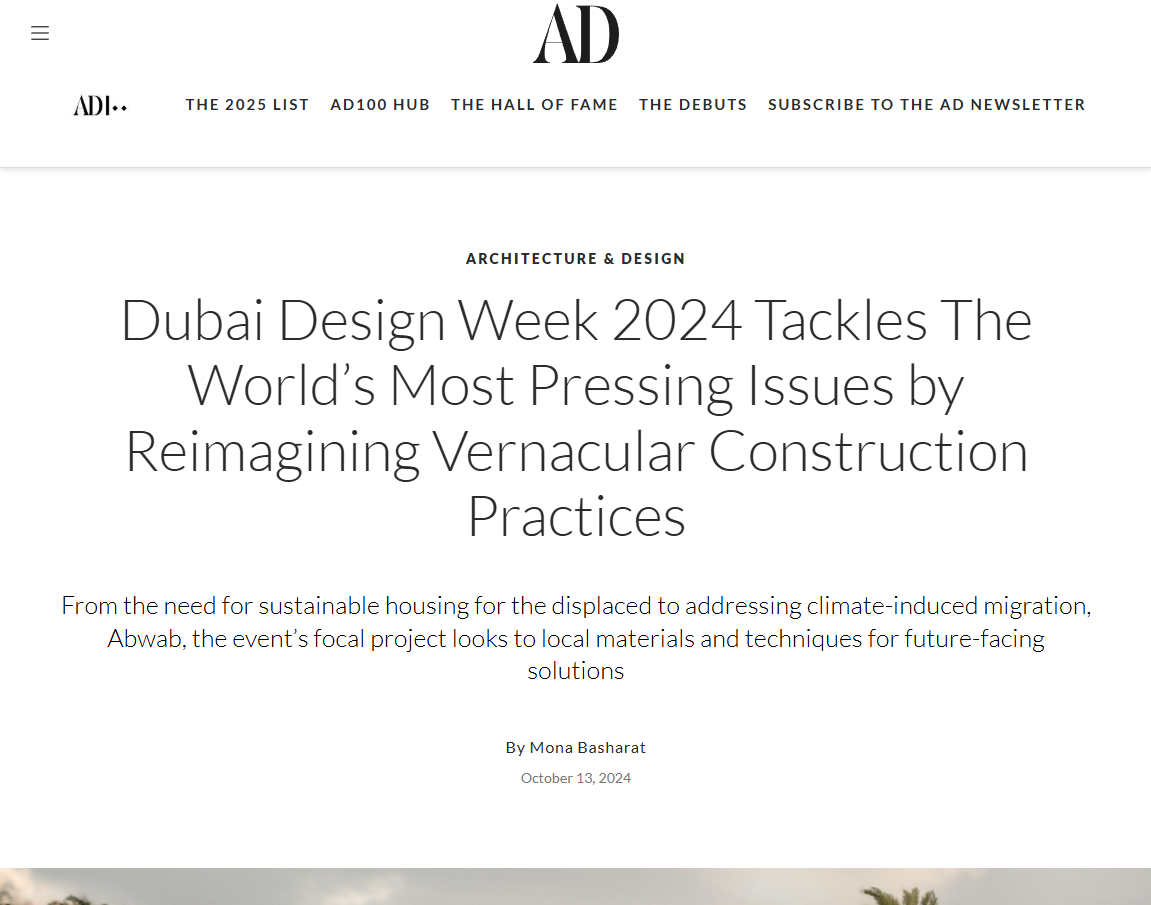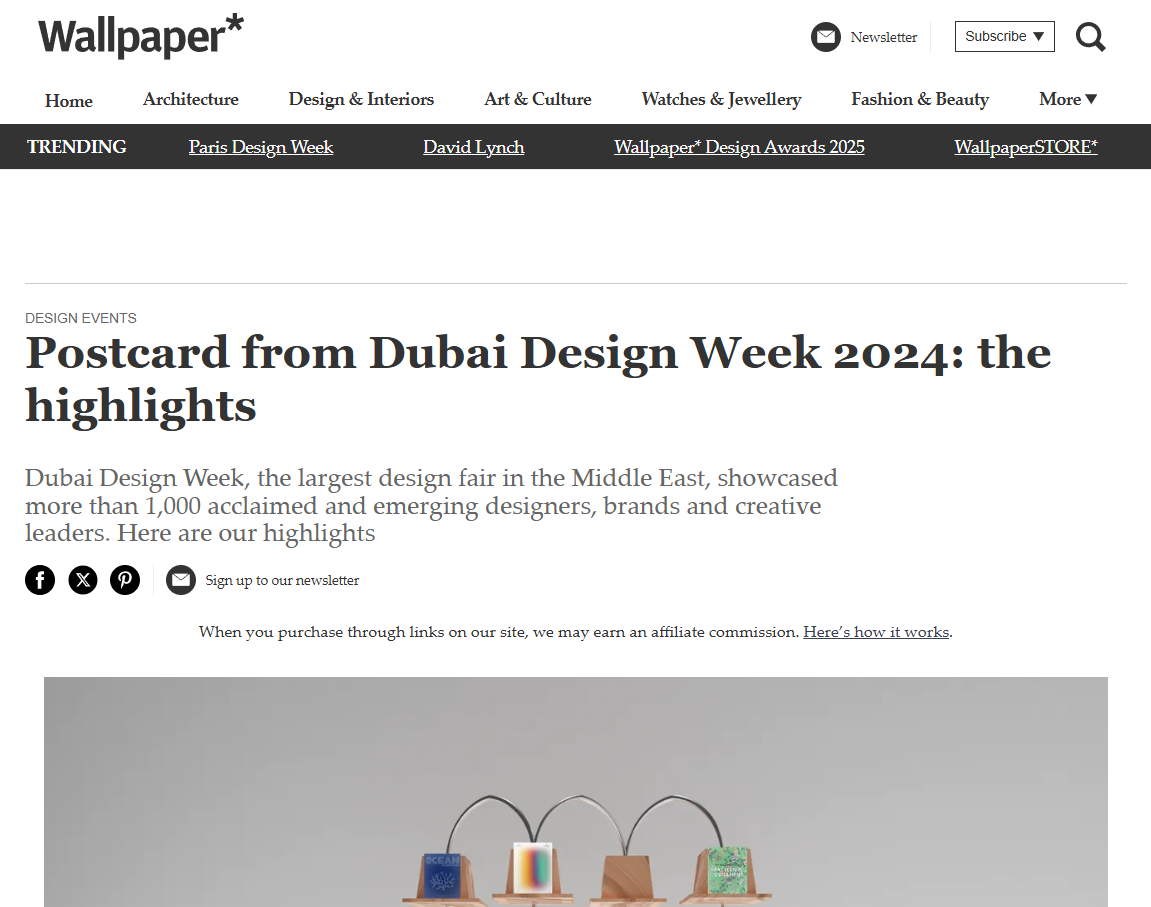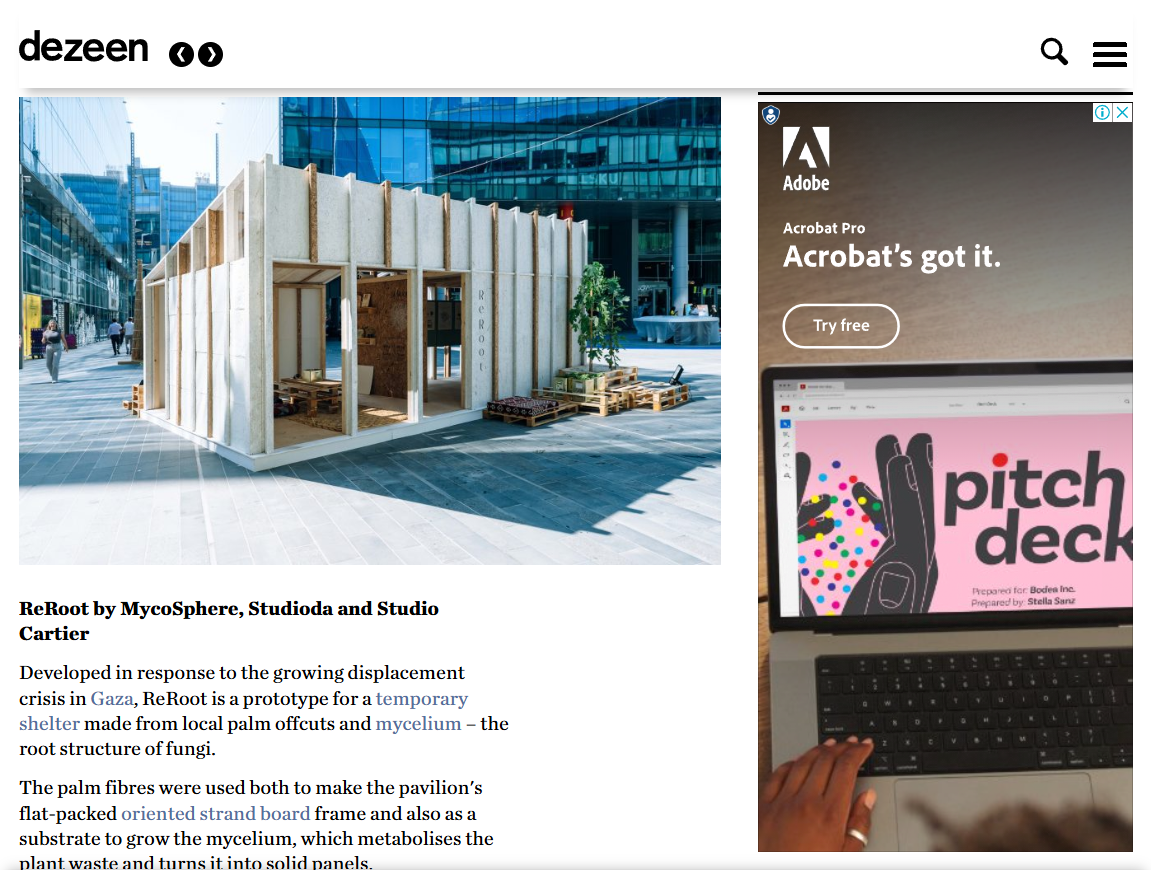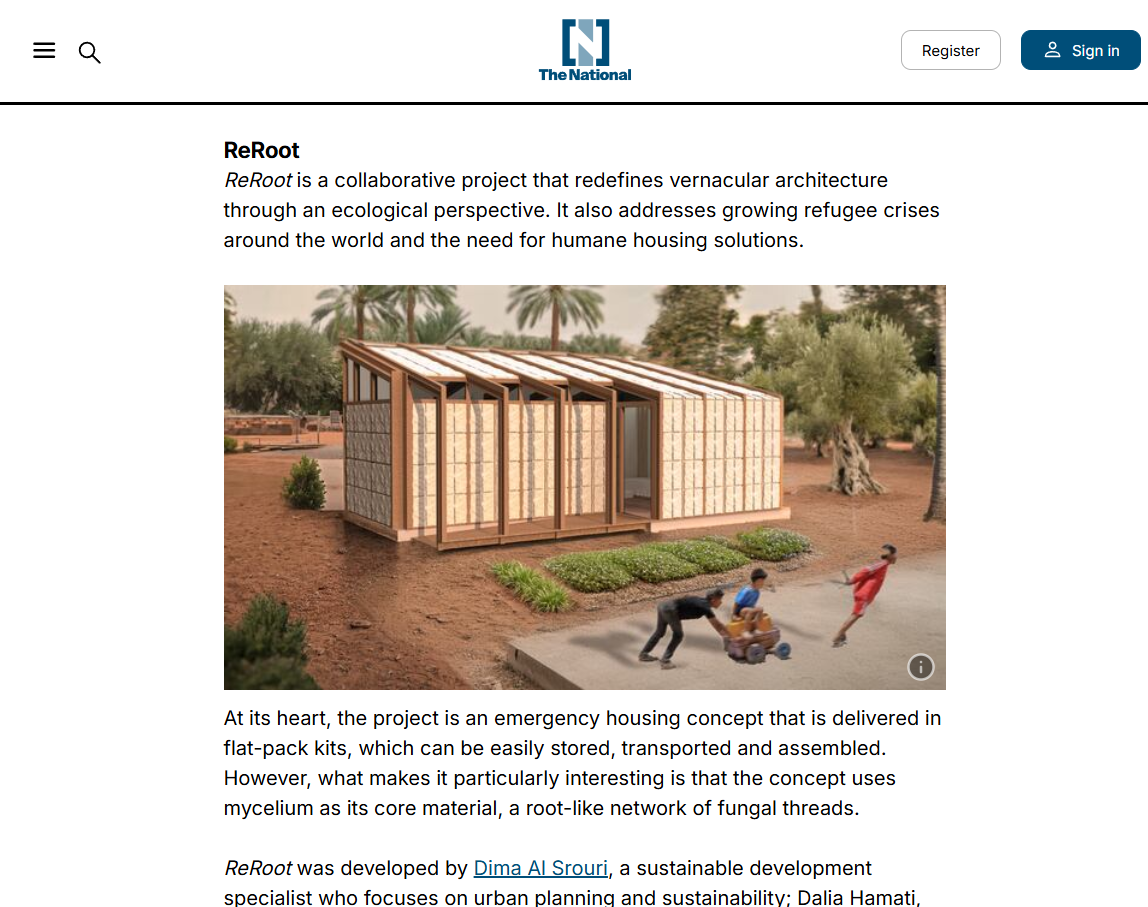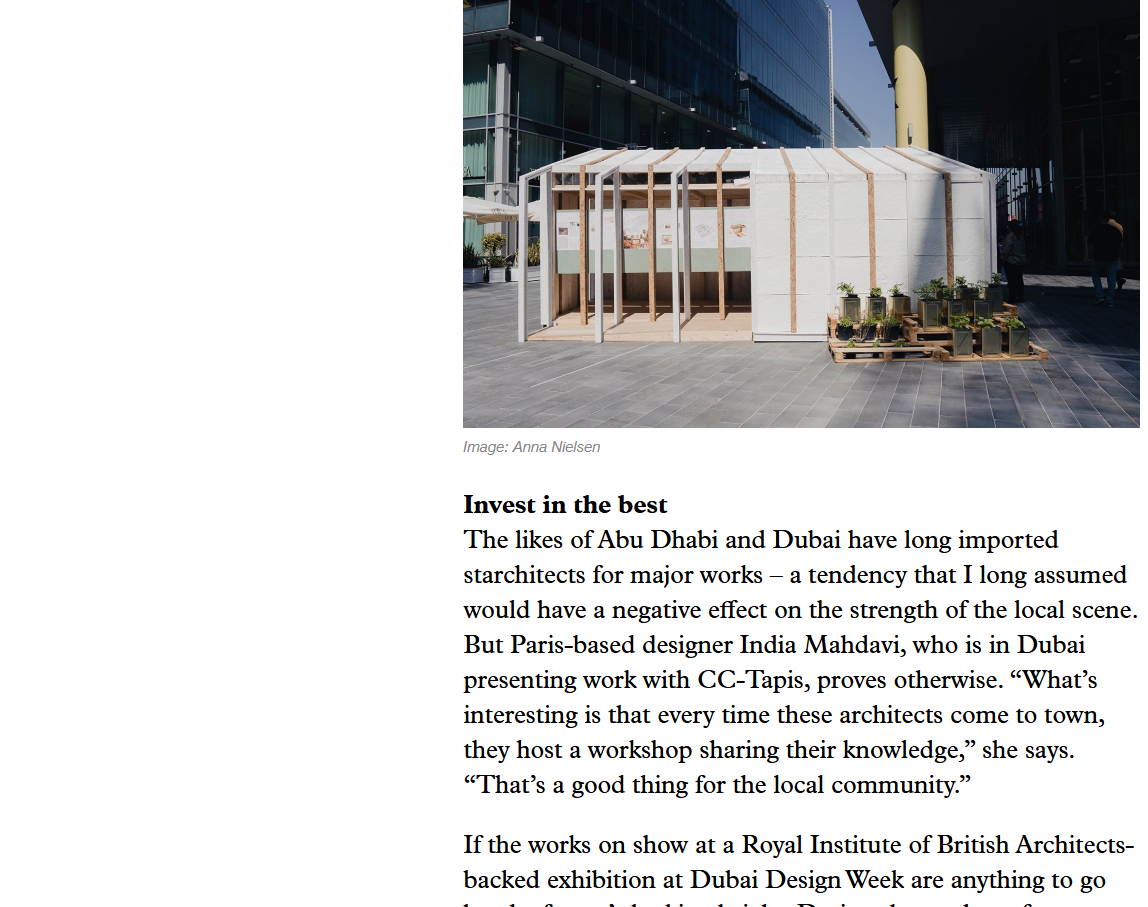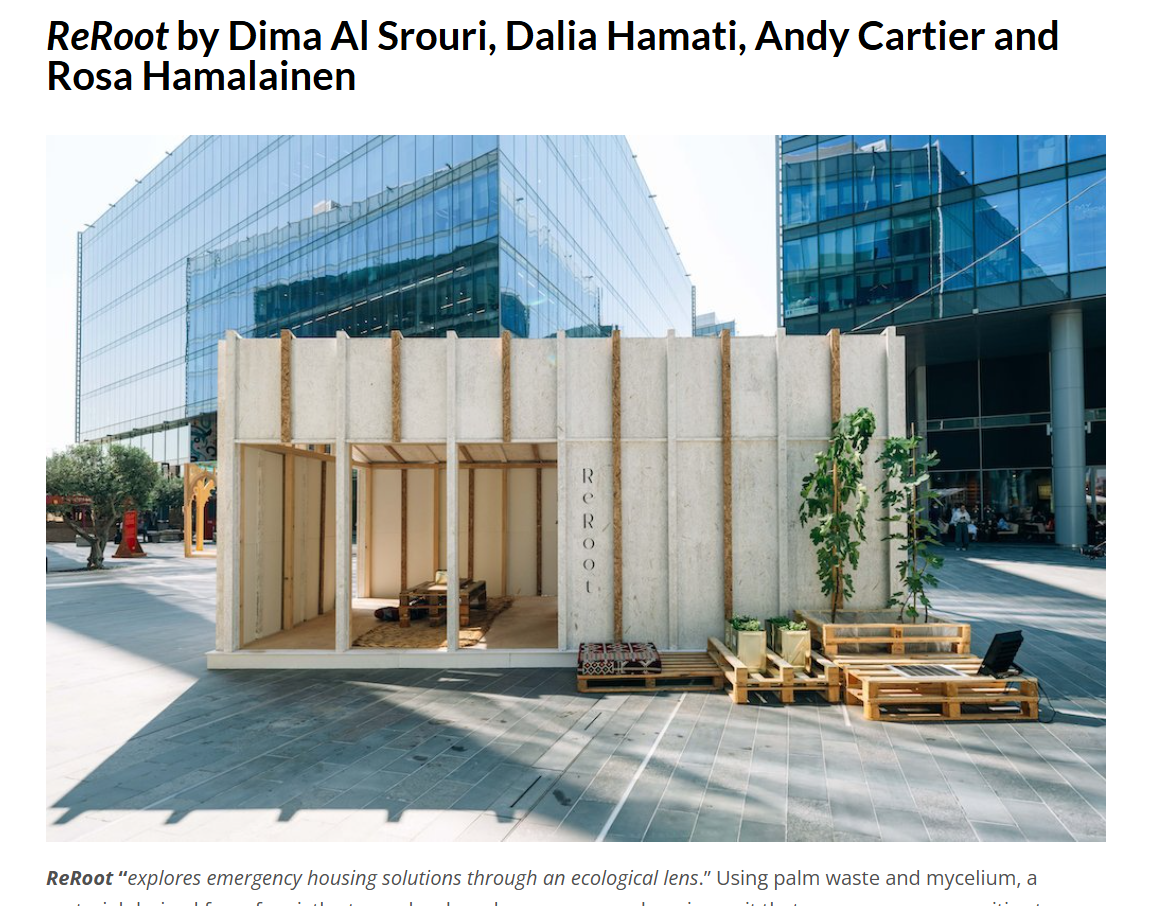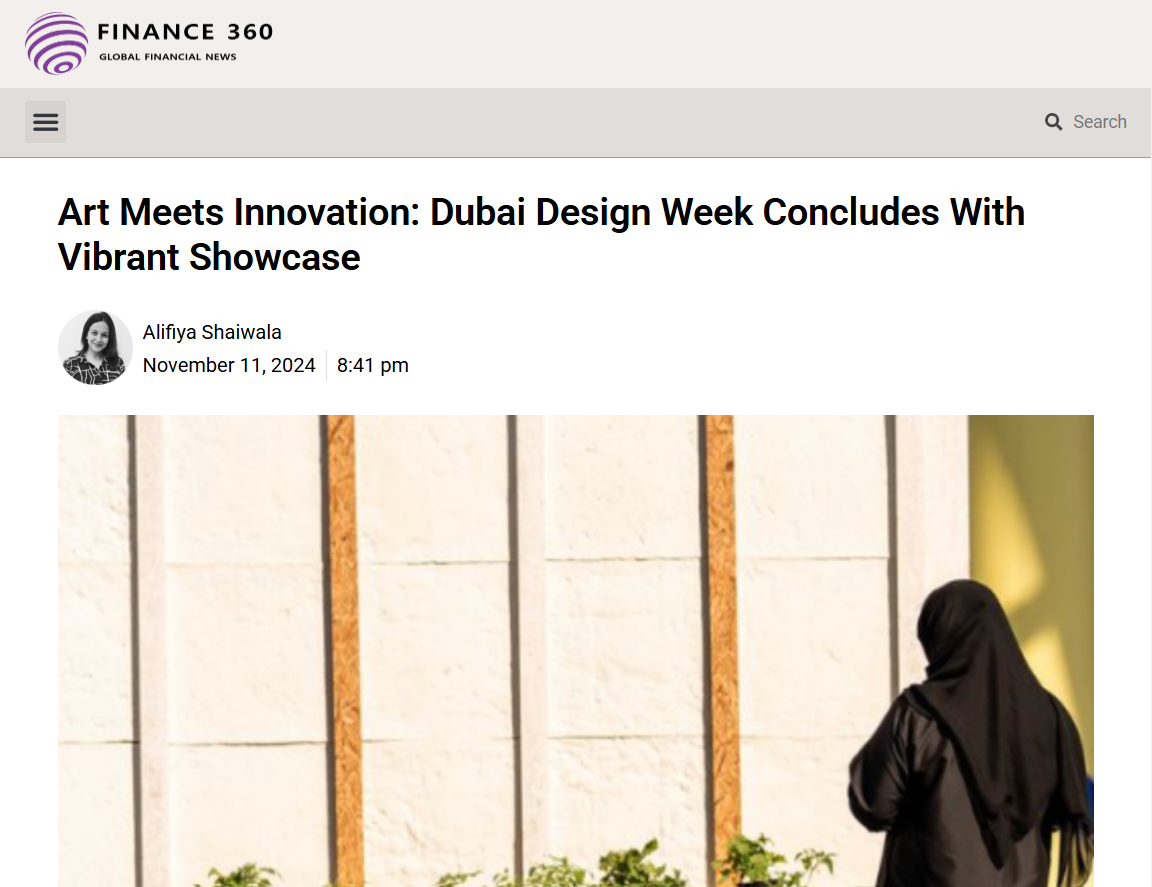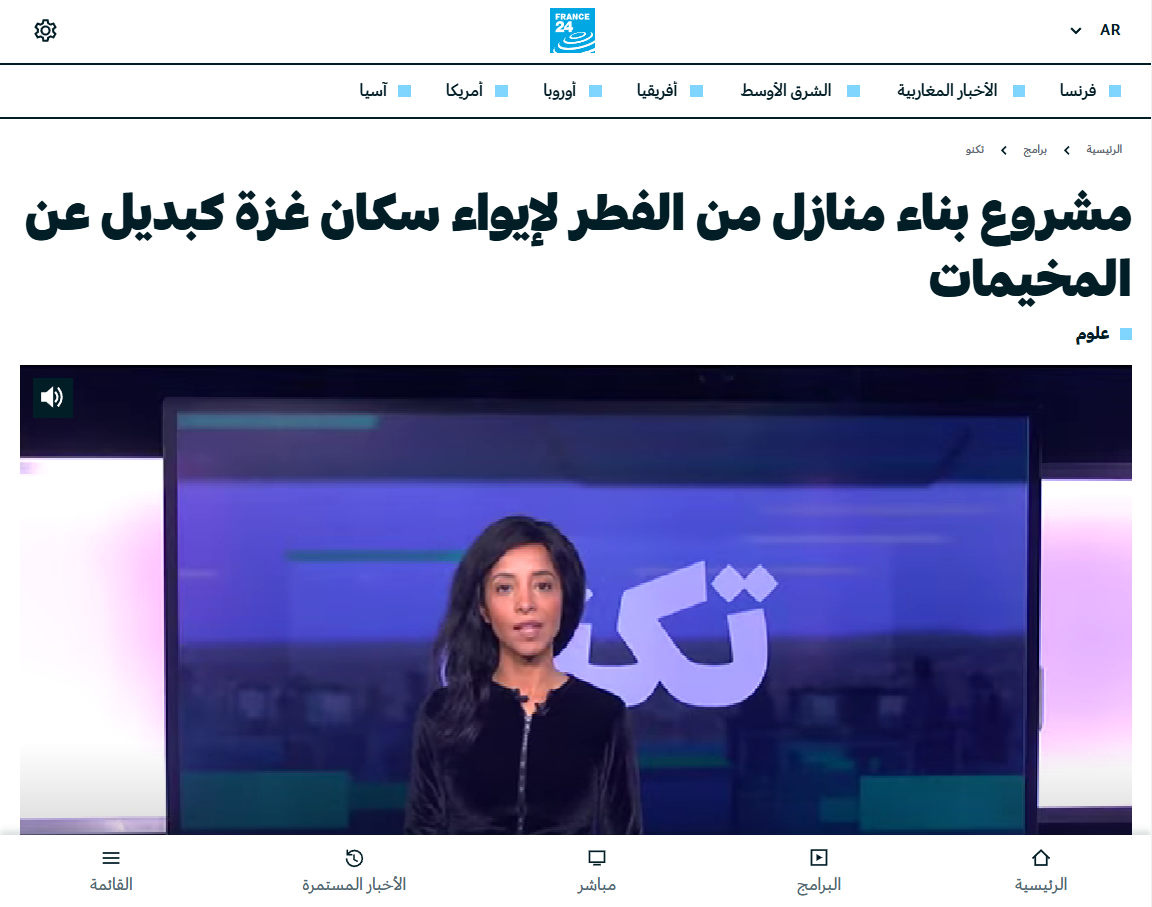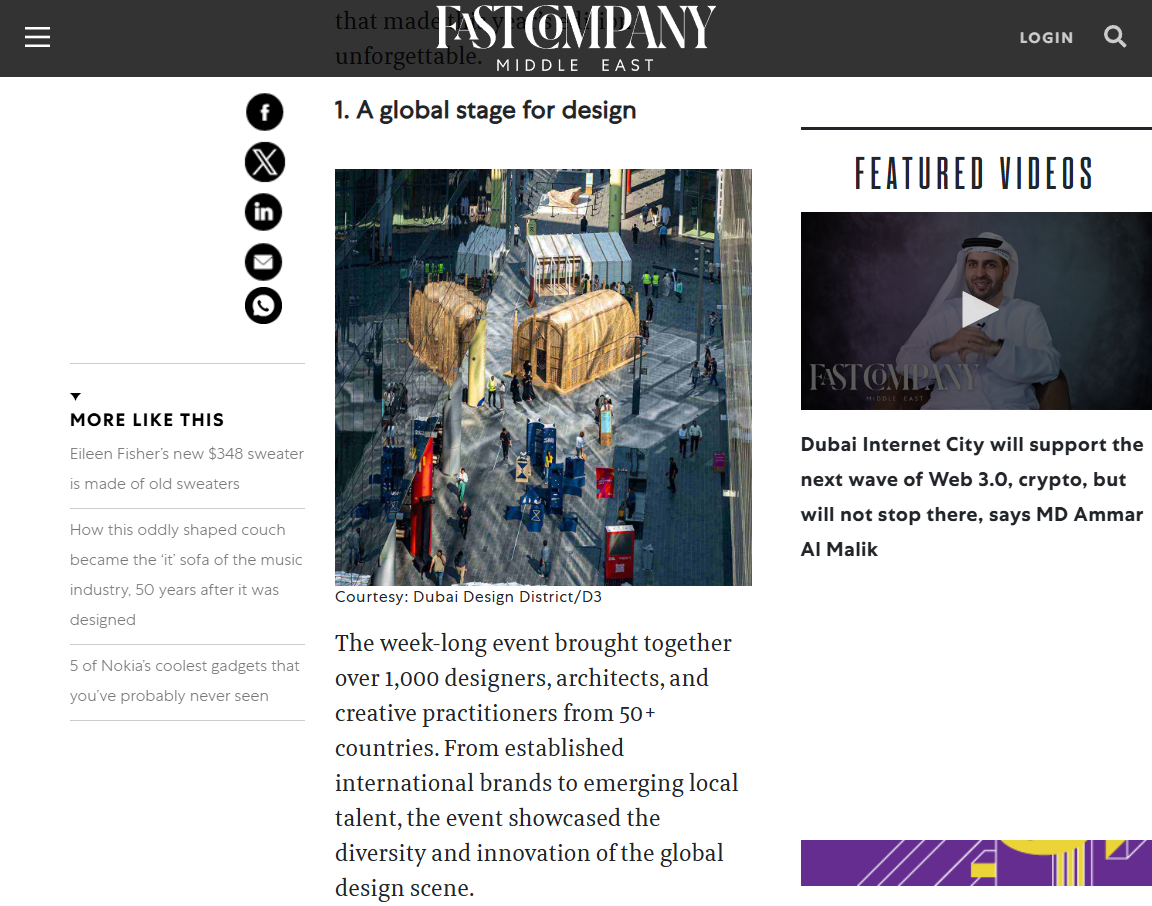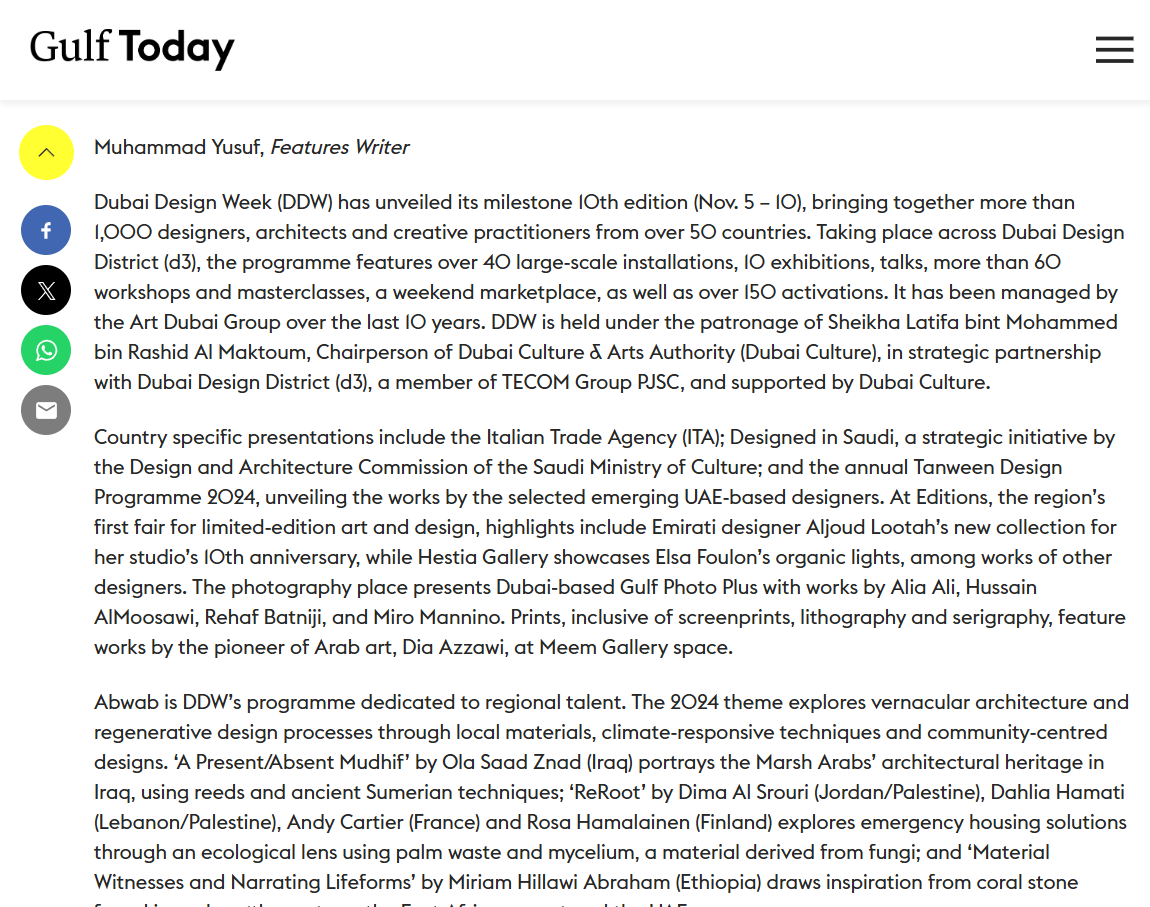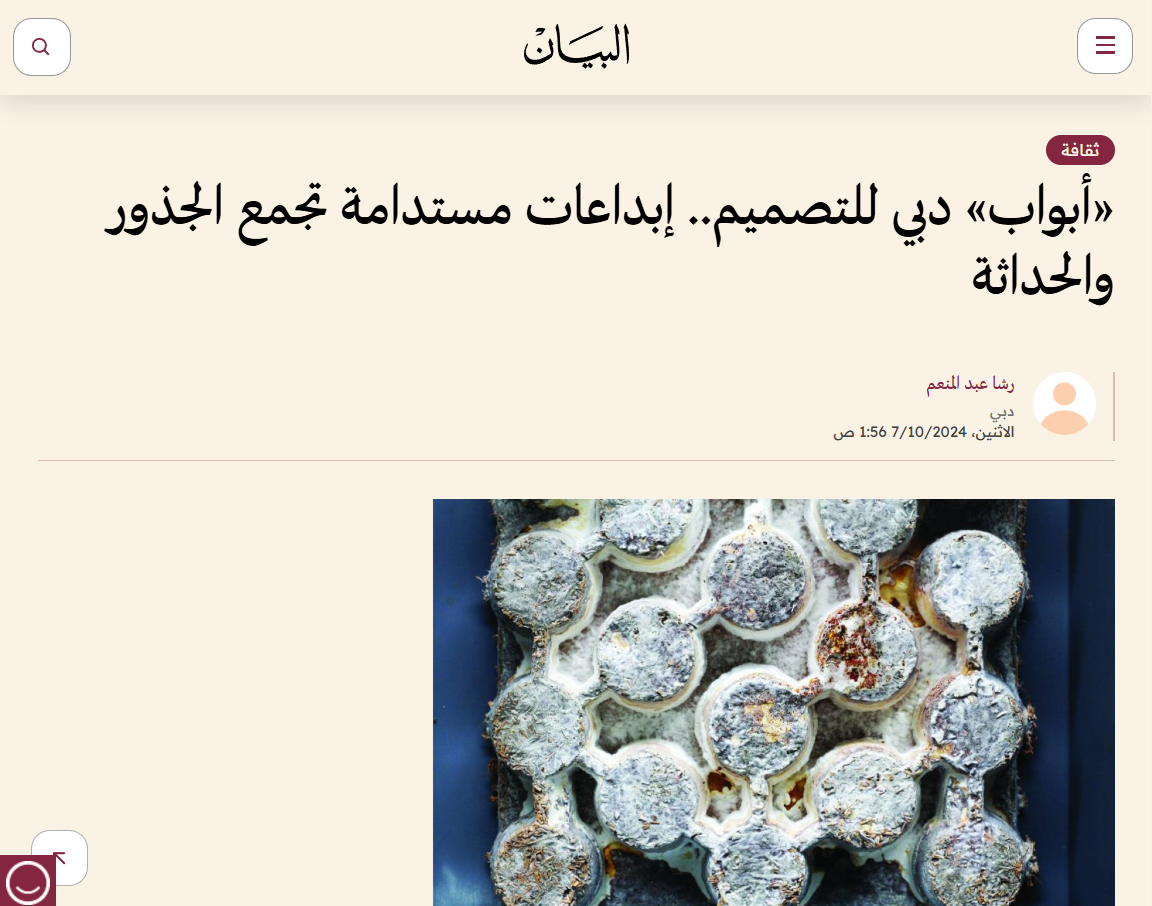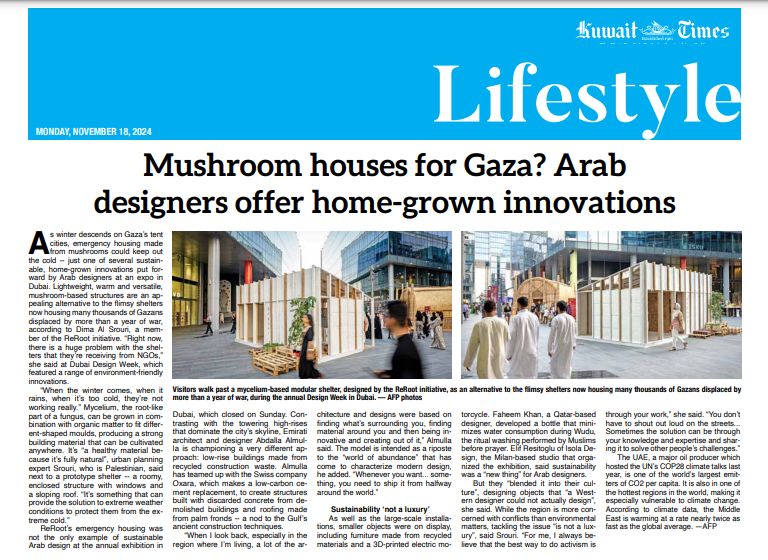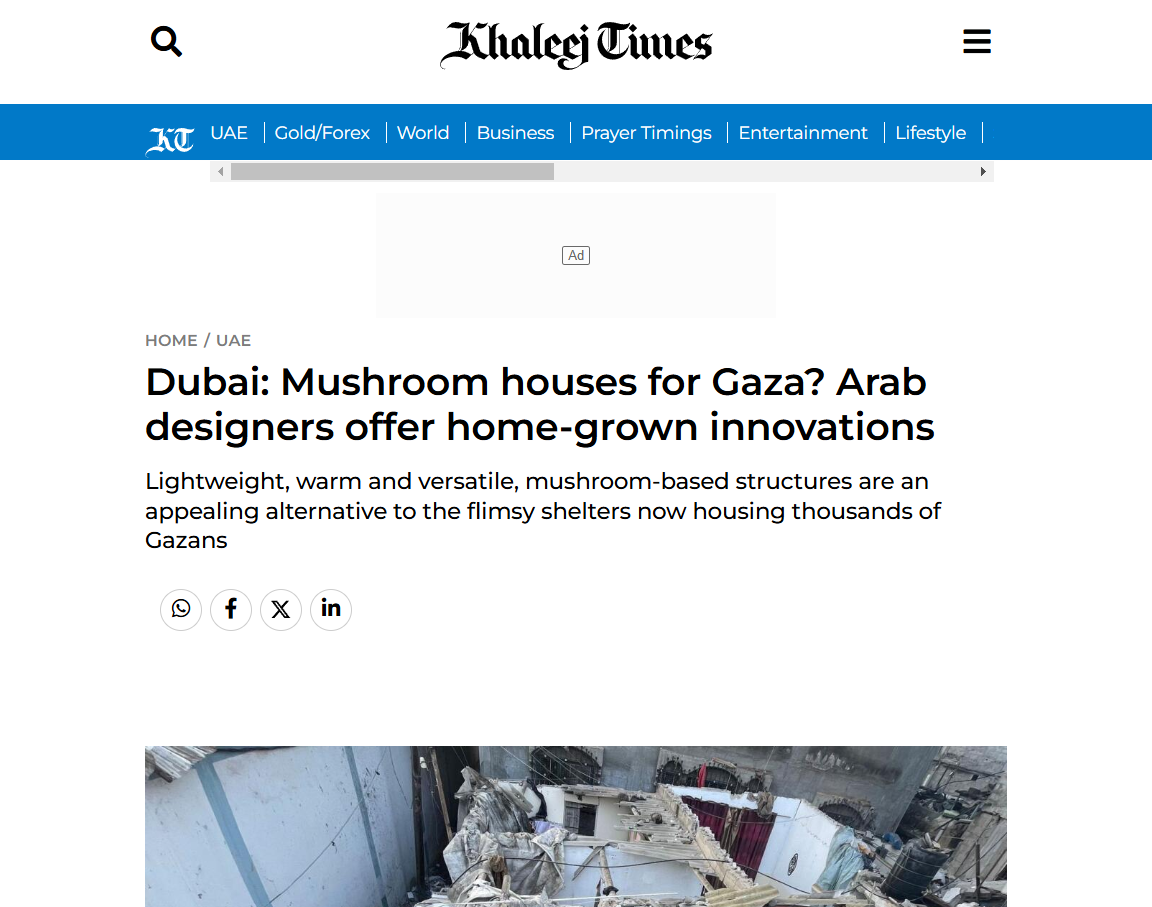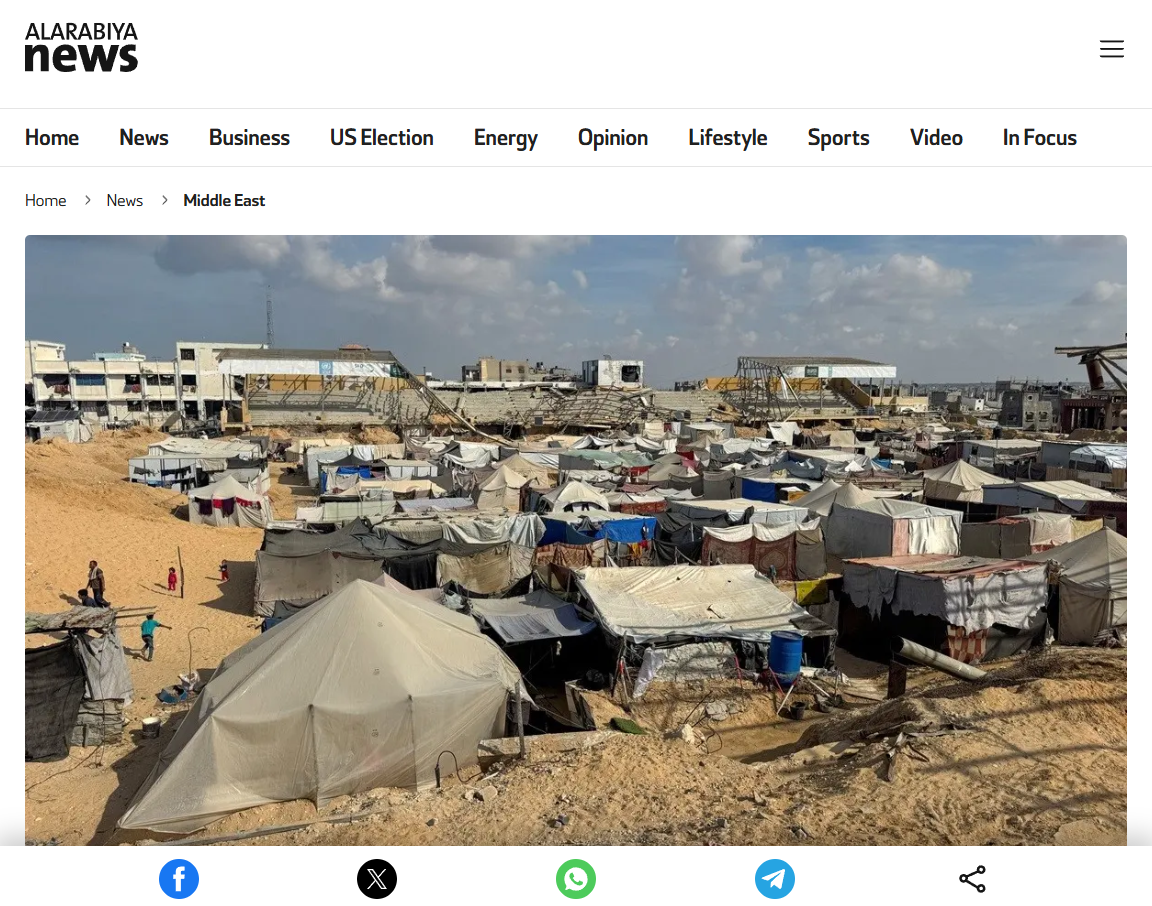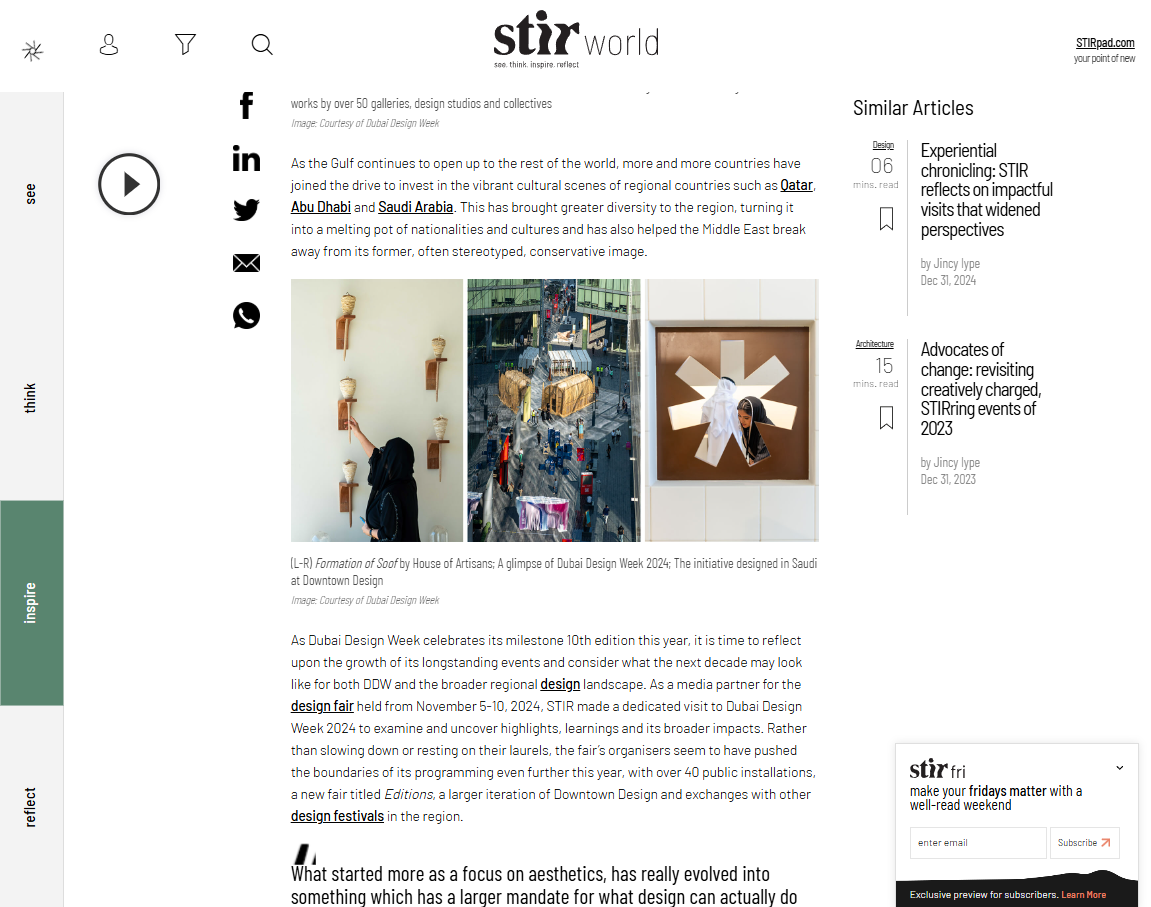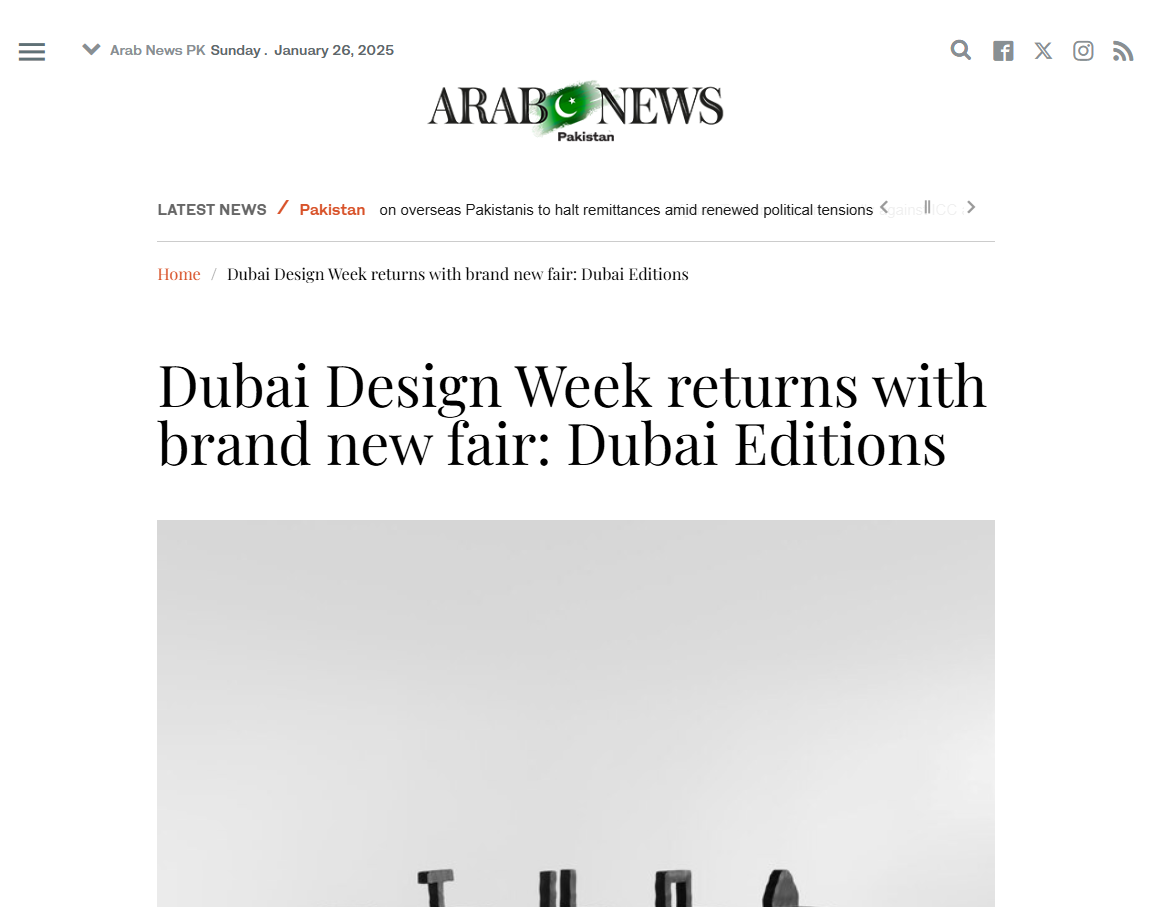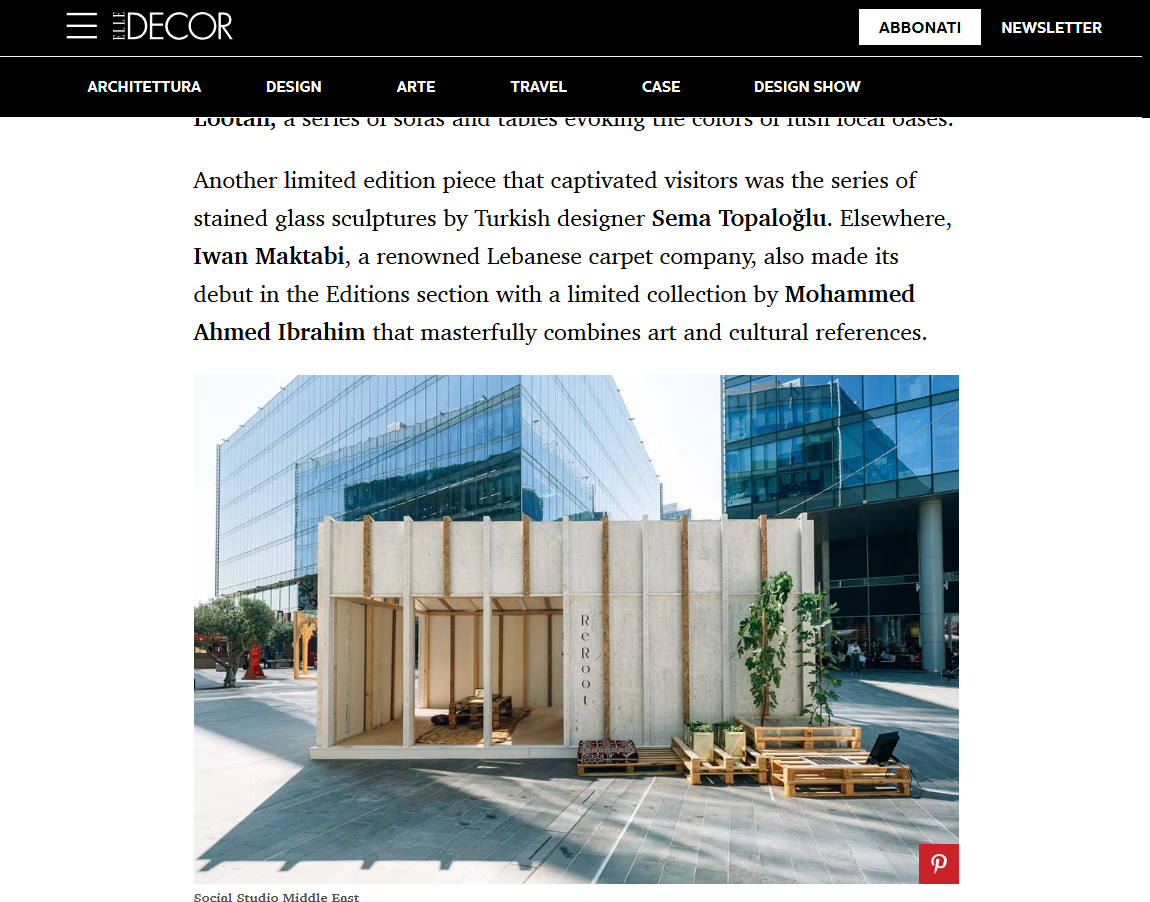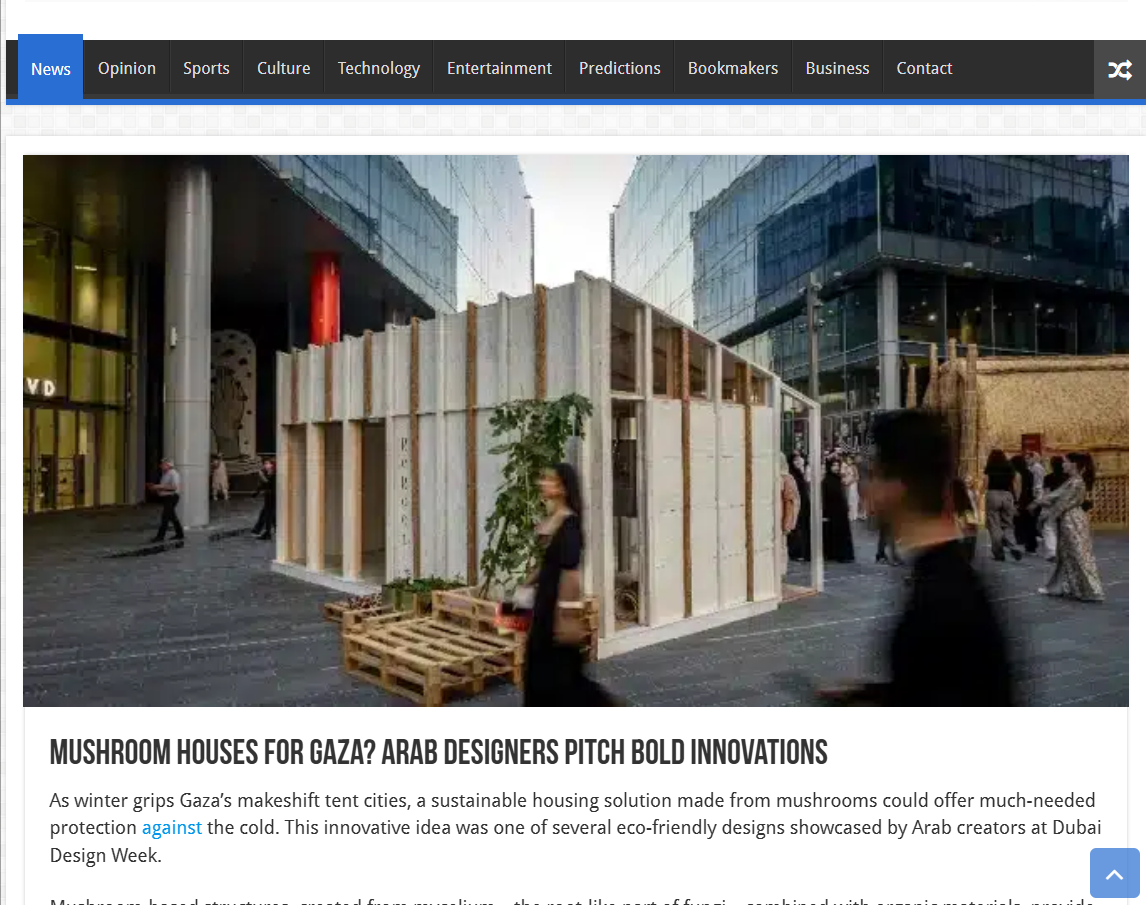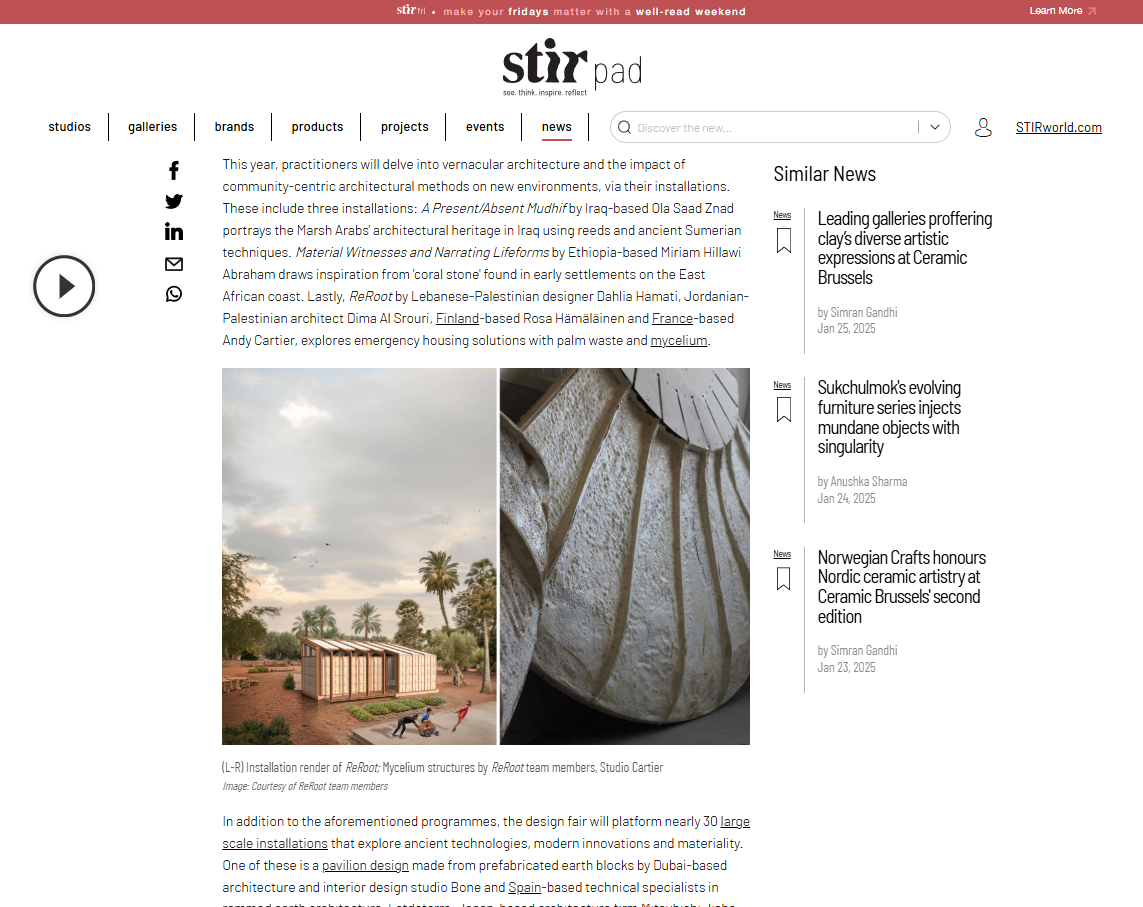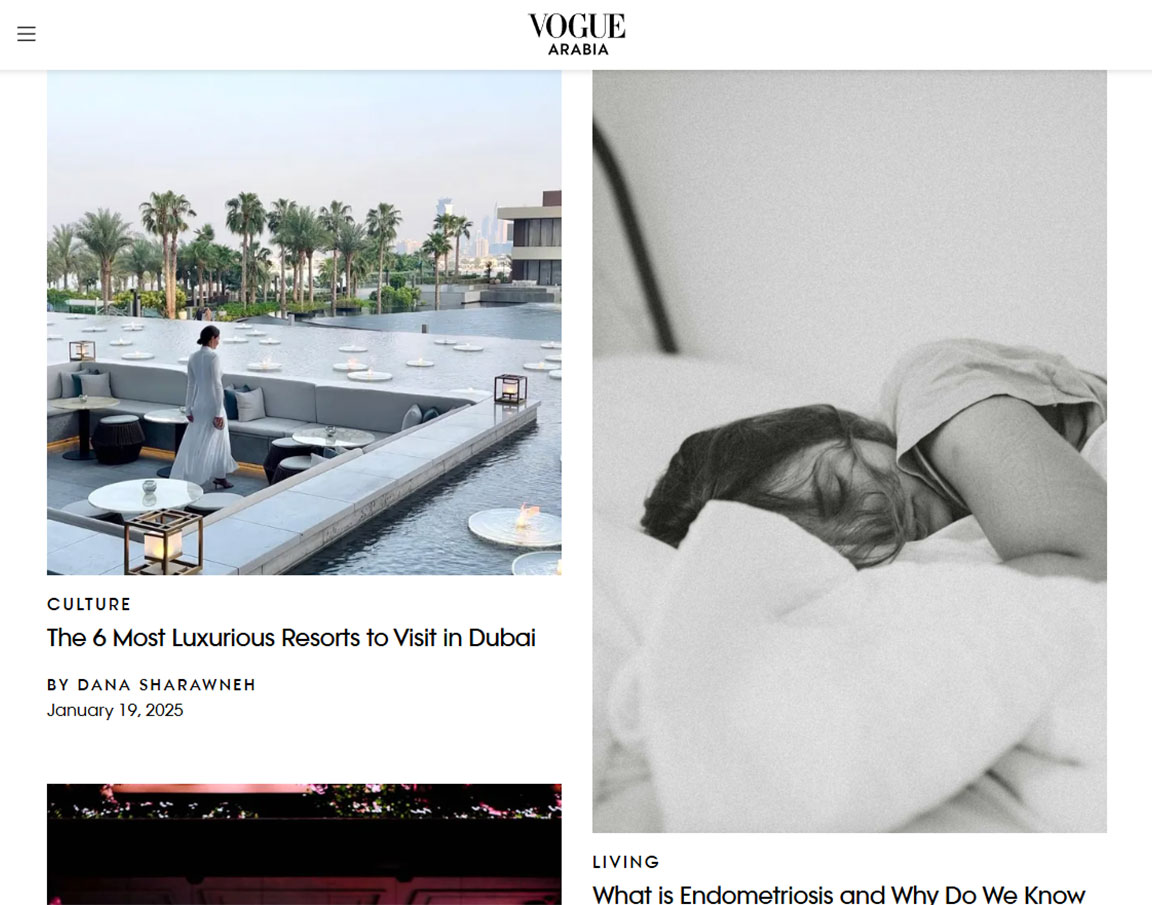ReRoot
- Mycelium Emergency Housing for Gaza
- Winner of Abwab Commissions at Dubai Design Week 2024
- Sponsor: Art Dubai, Dubai Culture
Imagine a world where displaced populations take root and grow, guided by lessons from the environment. This is ReRoot – a vision for hope through design that transcends barriers, restores dignity, and brings resilience to those who need it the most.
ReRoot reimagines emergency housing with mycelium. ReRoot is a sustainable housing solution that prioritizes thermal comfort, safety, privacy, community and regeneration of land.
The desperate situation of displaced people in Gaza and other parts of the world, the aftermath of war activities with such a huge stock of contaminated demolition waste, the resulting environmental degradation of land, and the long-term impact on biodiversity and agriculture, were the driving forces behind this project. There was a strong need to find a unique solution that encompasses the urgent need for a safe and dignified medium-to-long term shelter as well as a solution for the regeneration of land and its biodiversity.
Our mycelium panel cladding imitates the shape and patterns of natural stone, offering a lightweight solution that is ‘dignified’ and cost effective without the need to extract stone from natural resources. Our mycelium panels also have thermal & acoustic properties in addition to being fire resistant, which offers protection from extreme weather conditions, privacy and safety.
Our design concept builds on modular construction practices; a unit that is designed to be easily transportable, quickly deployable, and can be expanded and adapted to user needs as required.
We designed ReRoot with a mono-pitched roof where the elevations allow multiple modular units to be attached to create such diverse typologies in different arrangements that contribute to the community character. This allows the inhabitants to be involved in designing and building their own community with a modular unit that allows for creativity and adaptation to different environmental conditions, such as building orientation, context, and land conditions.
